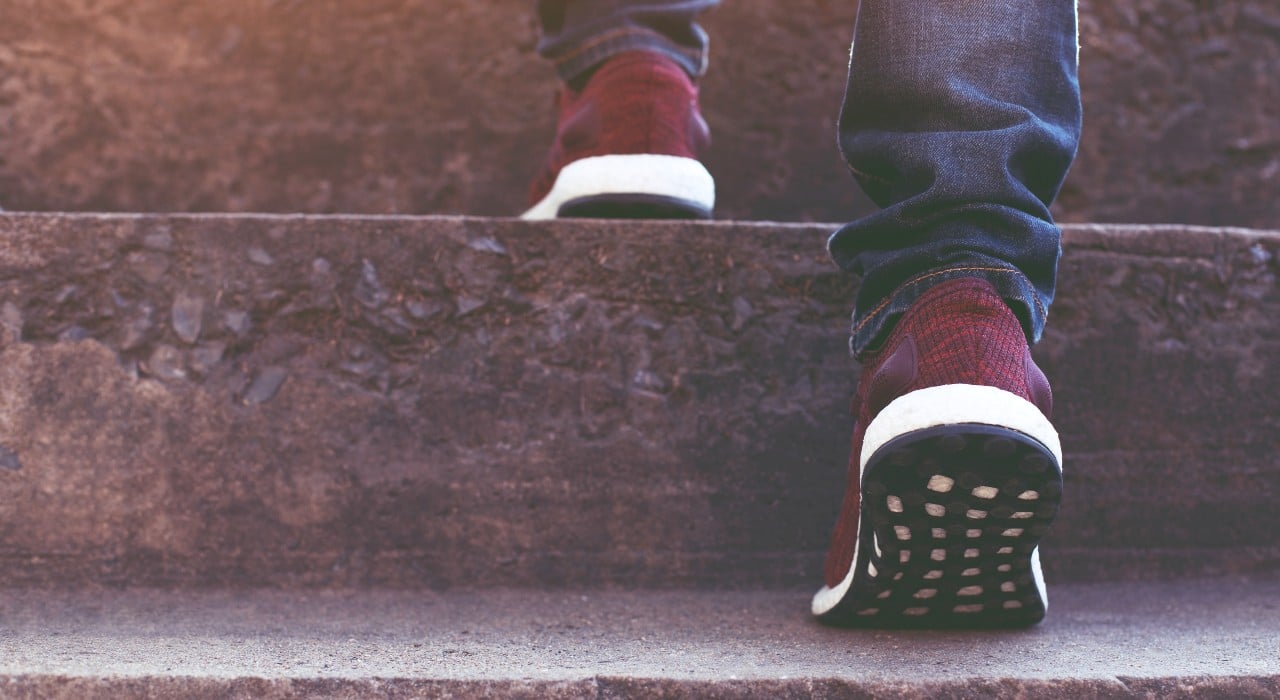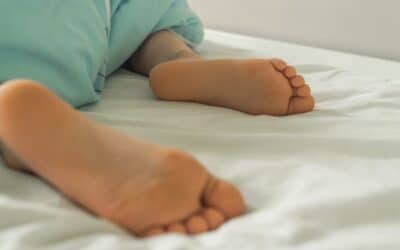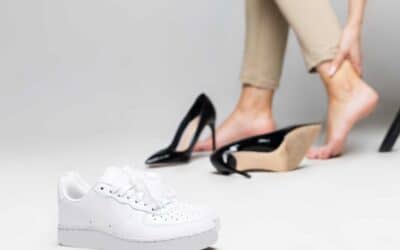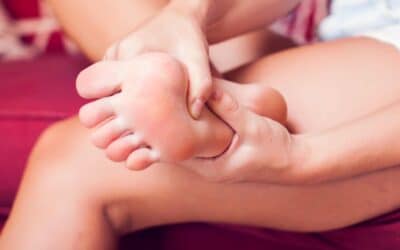The Anatomy of a Good Shoe for Heel Pain
Every set of feet is a little bit different, so the perfect pair of shoes for you may not be the same as the perfect pair of shoes for someone else.
That being said, there are several basic guidelines you can follow when shopping for your perfect pair:
- They have to fit. This sounds obvious, but the sad truth is that probably more than half of Americans regularly wear shoes that are the wrong size for their feet. Be sure to measure the length and width of your feet each time you shop (feet do gradually get bigger even in adulthood!) and try before you buy. Your shoes should feel comfortable right away—don’t expect them to “break in.”
- Go with activity-specific shoes where appropriate. For a person who is not overly active or who primarily gets their exercise from walking, a simple pair of multi-purpose walking or gym shoes may be sufficient. But if you are a runner, play sports, or pursue other active hobbies regularly, it’s important to have sport-specific shoes. Each type of activity stresses the heels and feet in different ways, and activity-appropriate shoes help to counter those specific stresses. Do not, for example, try to play basketball in running shoes—or vice versa!
- Good support for your arches. Note that “support” and “cushioning” are NOT the same thing. You want to feel good contact between the shoe and your foot throughout the entire span of your arch. This will help the plantar fascia from over-flattening under your weight, which causes it to become irritated.
- A firm heel counter. Take your hand and press on both sides of the shoe at the back of the heel. There will probably be a firm plastic heel counter inserted into this area, and it should not be easily collapsible under pressure. A strong heel counter helps keep your shoes from sliding around on your feet and also helps control excess rearfoot motion that often contributes to heel pain.
- The “twist test.” Grasp the shoe at the toe box and the heel and try to twist it. If it folds like a cheap suit, chances are your arches won’t get the support they need (and your heels will suffer as a result). No flex at all, however, could indicate the shoe is too rigid. Just a little bit of give is usually best. That being said …
- A rigid sole may be best for people with a history of heel pain. If chronic heel pain has been a constant battle for you, you may want to look for shoes with extra thick midsoles, or even a “rocker bottom” shape. These shoe styles can help keep impact forces on the heels to an absolute minimum, but they may not be for everyone.
- Don’t be afraid to let go. No shoe lasts forever. Wear and tear will eventually cause a shoe to break down in ways that aren’t always obvious from the outside. Even shoes stuffed in a closet that are never worn eventually suffer from material degradation. So if your heels are starting to hurt despite wearing shoes that were once comfortable, it may be time to replace them.
At Texas Foot & Ankle Center, we are happy to provide recommendations about what kinds of shoes would be best for your feet and your activities. If chronic pain heel pain is a struggle for you, then you should be checking in with us anyway!
In today’s world—a place full of hard, flat surfaces everywhere, indoors and out—shoes are absolutely essential. Simply put, our feet need a little extra support to handle the physical challenges of modern life.
But here’s the tricky part: while a good pair of shoes can often significantly reduce the amount of heel pain you feel on a daily basis, a bad pair of shoes can actually make things worse.
If you’ve started to notice heel pain creeping into your daily routine—especially after periods of standing or activity—then your shoes should be near the top of your suspect list. Making sure you’re wearing quality footwear is a good first step toward finding relief.
Of course, shoes alone may not be enough. If your heel pain persists, be sure to give us a call. In the meantime, here’s what you should look for in terms of footwear.
Avoid Too Much Barefoot Walking
In some cases, heel pain begins to emerge not because your shoes are bad, but simply because you aren’t wearing them enough! This is something we’ve seen a lot of in 2020, with many of our patients switching to working from home.
If you typically go barefoot at home, and have noticed heel pain starting to develop or get worse, consider wearing your walking shoes indoors for at least part of the day—especially if you plan to be doing a lot of walking or standing on hard surfaces, such as in the kitchen.
Even a few hours of extra cushioning and support for your feet can sometimes make a big difference!
When New Shoes Aren’t Enough
While a great pair of shoes can be a big help in the fight against heel pain, sometimes more treatment is required to finally overcome the discomfort and get back to doing the things you love without restriction.
The good news is that heel pain is very treatable, and most cases resolve within just a couple of months without requiring surgery—IF you see a foot and ankle expert and follow their treatment guidelines, of course!
We can put together a customized treatment plan, which may include things like orthotics, physical therapy, activity modifications, cortisone injections, or more specific footwear recommendations. The exact specifics of your treatment plan will depend on your unique situation and needs.
Do not continue to struggle with heel pain that intrudes on your daily life! If new shoes or a few days of rest aren’t cutting it, give us a call. We can help you get rid of the pain and teach you how to keep it away over the long term. Give our Dallas Lake & Garden District office a call today at (214) 660-0777, or request an appointment online.



